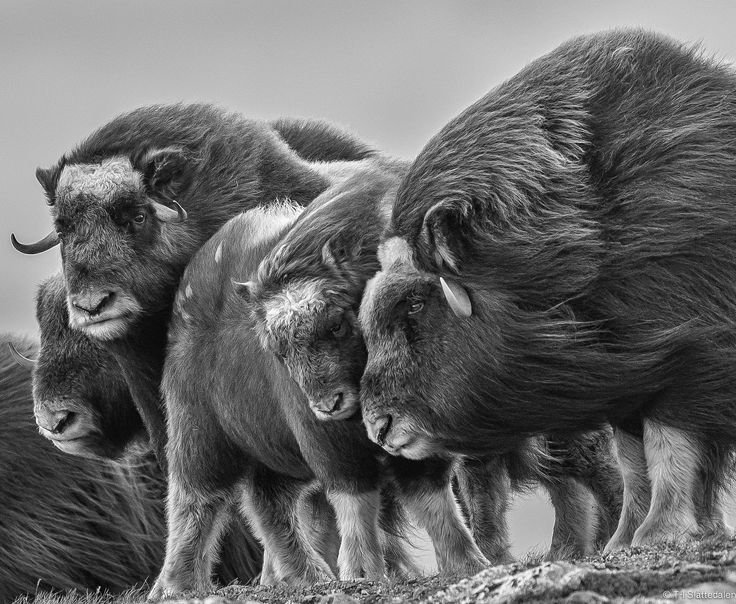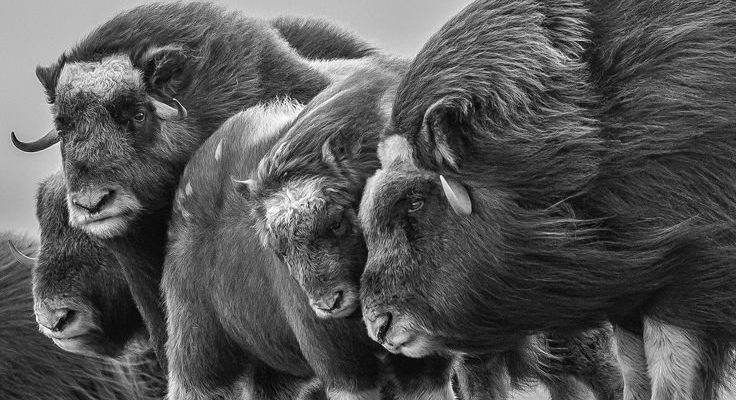
So, where do they come from? The muskox has quite a fascinating lineage, tracing back to a time when giant mammals roamed the Earth. They’re like the woolly mammoths’ slightly smaller, fuzzier cousins, having weathered both the glacial periods and the warming sequences of our planet. Let’s dive into the evolutionary history of these remarkable creatures and uncover the details of their adaptations and survival strategies.
Origins of the Muskox
To really understand the muskox, we need to rewind the clock to around 2 million years ago. During the Pleistocene epoch, Earth was a much colder place, experiencing several glacial and interglacial periods. This was the time when the muskox first emerged, belonging to the family Bovidae, which includes goats and sheep. Their ancestral lineage is thought to stem from a group of creatures called Caprinae, which diversified into many species, including modern goats and sheep.
But wait—there’s more! The muskoxen we see today are primarily represented by two species: the Ovibos moschatus and the extinct Euceratherium. This latter species looks a bit like a giant muskox with long horns and weighed up to 2,000 pounds. As the climate changed, the Euceratherium faded away, while the Ovibos moschatus adapted and thrived. This evolution is a testament to their adaptability and strength.
Adaptations to Climate Change
Here’s the thing: muskoxen are the unsung heroes of the tundra. Their thick, double-layered coats are not just for show; they’re essential for survival in severe cold. The outer layer consists of long, coarse guard hairs, while the inner layer is made of soft underwool, trapping air to create insulation. This unique adaptation allows them to withstand frigid temperatures that can plummet to -40 degrees Fahrenheit!
Moreover, their body shape helps them conserve heat. They have short legs and a stocky build, minimizing the surface area available for heat loss. You might say they’re built like tanks, which is pretty handy when snow drifts reach their bellies. When it comes to grazing, their broad hooves are perfect for breaking through hard packs of snow to find their favorite food: grasses, moss, and lichens.
Social Structures and Behavior
Muskoxen are also fascinating when it comes to social behavior. They form tight herds, which provide protection against predators like wolves. The males, especially during the mating season, can become quite aggressive, engaging in impressive displays of strength, including head-butting contests. This behavior is not just a show of dominance; it helps determine breeding rights within the herd.
Their social structure is largely matriarchal, with female muskoxen often leading the herd. Interestingly, young calves stay close to their mothers for protection and learning. These social bonds are essential, especially for survival in the harsh Arctic environment where cooperation can mean the difference between life and death.
Muskoxen Through the Ice Ages
During the Ice Ages, muskoxen spread across North America, Europe, and Asia. They adapted to various habitats, from treeless tundras to open plains. As glaciers advanced, they migrated to find suitable conditions, often outrunning some predators thanks to their impressive size and speed over short distances.
In the face of changing climates and the eventual retreat of glaciers, muskoxen had to rely on their extensive abilities to adapt. They faced plenty of challenges, including shifts in food availability. One of the most significant events in their history was the extinction of many other large mammals when the climate warmed. While many species vanished, muskoxen persevered, which speaks volumes about their resilience.
Modern Conservation and Challenges
Fast forward to today, and it’s essential to talk about the plight of muskoxen in the modern world. Although they still thrive in the Arctic regions, they’ve faced challenges due to climate change, habitat loss, and hunting pressures. Thankfully, conservation efforts are underway to ensure their survival.
In certain areas, such as Alaska and Canada, various programs aim to protect muskox populations. Some herds are even successfully relocated to areas where their numbers had dwindled. The focus is not just on protecting these iconic beasts but also preserving their habitats. After all, a healthy ecosystem benefits everyone—from the smallest insects to the largest mammals like the muskox.
Importance of Muskoxen to Ecosystems
Muskoxen play a crucial role in their ecosystems. As grazers, they help shape the tundra landscape by preventing overgrowth of certain plants, which can benefit other species. Their grazing patterns promote biodiversity, which is vital for a balanced ecosystem. Moreover, they serve as prey for larger predators, linking them in the food chain.
In indigenous cultures, muskoxen have historically provided meat, clothing, and tools. The fibers of their undercoat, known as qiviut, is incredibly soft and warm, making it a prized material for textiles. By supporting muskox populations, we’re not just helping an animal but also fostering cultural traditions and sustainable practices.
The evolutionary history of the muskox is a tale of resilience, adaptation, and survival. These remarkable creatures have weathered ice ages, climate shifts, and the challenges of modernity. Today, they stand as symbols of the wild Arctic, reminders of how life can endure even in the harshest of conditions.
As we move forward, it’s crucial to keep learning about muskoxen and supporting conservation efforts. Whether it’s through education, habitat preservation, or simply sharing their story, we all can play a part in ensuring that these magnificent animals continue to roam the tundras for generations to come. After all, the story of the muskox is a part of our natural heritage, and protecting it is a responsibility we all share.

